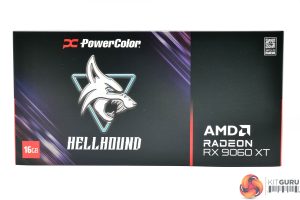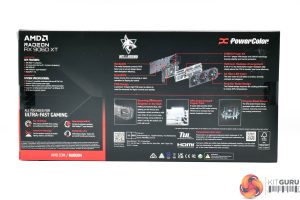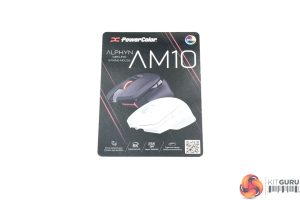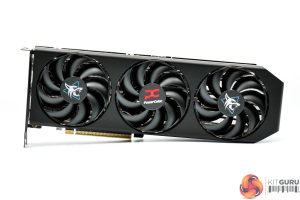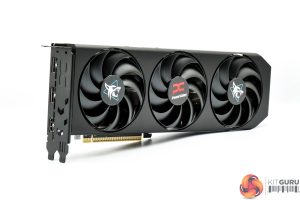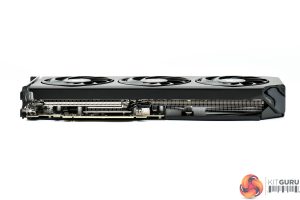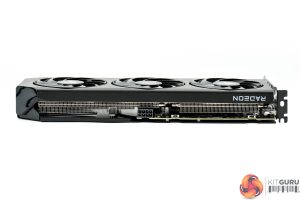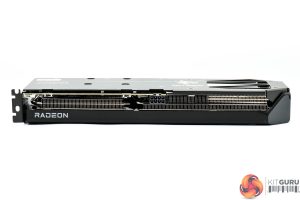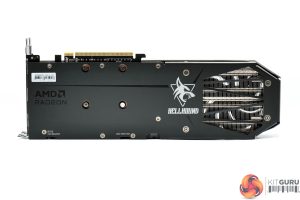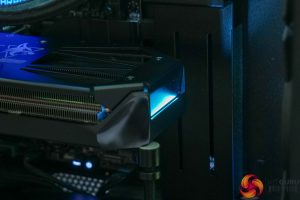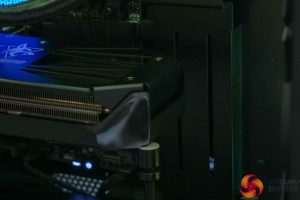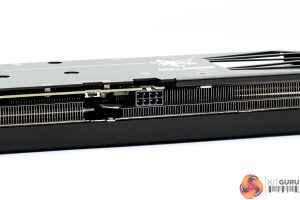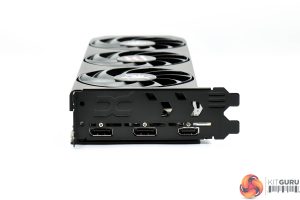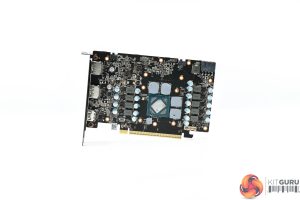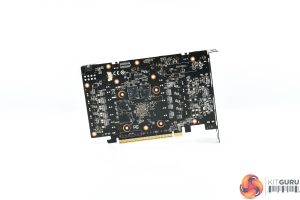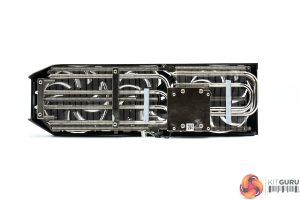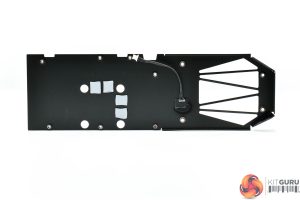Moving onto the PowerColor RX 9060 XT 16GB Hellhound, this ships in a very dark box, with the Hellhound logo taking pride of place.
The only included accessory is a leaflet highlighting PowerColor's new peripherals.
The graphics card itself has changed since we last saw a Hellhound model. Gone is the grey shroud and translucent fan blades, and instead PowerColor has opted for a stealthy all-black approach – with just the stickers on the fans adding some colour.
Those fans measure 90mm in diameter.
In terms of dimensions, the card measures 330 x 120 x40mm. It looks quite long and thin, given it's only a dual-slot thickness. It weighed in at 821g on my scales.
The front side is left almost completely plain, except for the Radeon logo printed in white.
As for the metal backplate, it's also fairly plain, though the Hellhound logo does add some visual interest, plus there's a flow-through area too. You will also note a BIOS switch, offering a choice of OC or Silent modes, plus there's an LED toggle switch.
The switch lets you toggle the lighting from ice blue to off – it's just a small LED strip at the end of the card though, so it's not overly eye-catching. I personally preferred the previous design which also illuminated the fans, and offered a choice of purple lighting, but PowerColor says that divided opinion, so they've stripped things back this generation.
Power is delivered by a single 8-pin connector, while there's two DisplayPort 2.1 and one HDMI 2.1 video outputs.
As for the PCB, PowerColor has gone with a very similar design to the other cards on test today – we find seven phases for the GPU and two for the memory, with both GPU and memory VRMs controlled by separate Monolithic Power Systems MP2868A controllers. Monolithic MP87993 MOSFETs are used throughout.
We can also note that the 16GB 9060 XTs are utilising a clamshell design, with four memory modules on either side of the PCB.
The Hellhound's heatsink utilises a total of four heatpipes, with the GPU and memory contacting with a central baseplate, while the MOSFETs are cooled by secondary plates.
Thermal pads are positioned on the underside of the backplate, too, to provide some extra cooling capabilities.
 KitGuru KitGuru.net – Tech News | Hardware News | Hardware Reviews | IOS | Mobile | Gaming | Graphics Cards
KitGuru KitGuru.net – Tech News | Hardware News | Hardware Reviews | IOS | Mobile | Gaming | Graphics Cards


